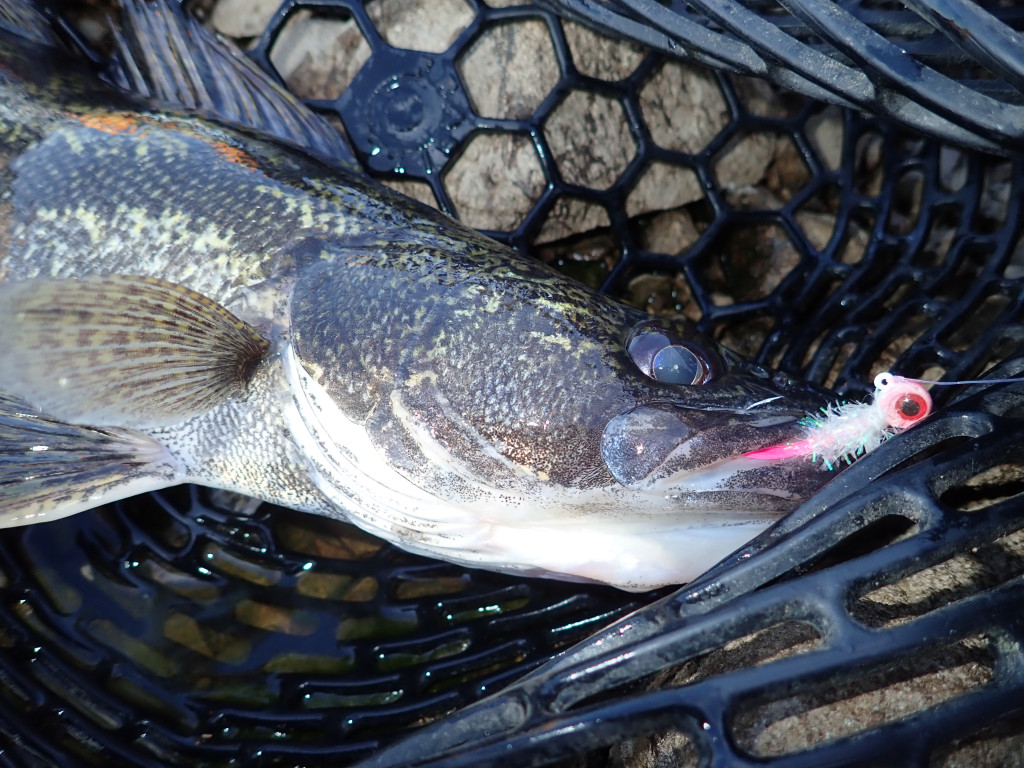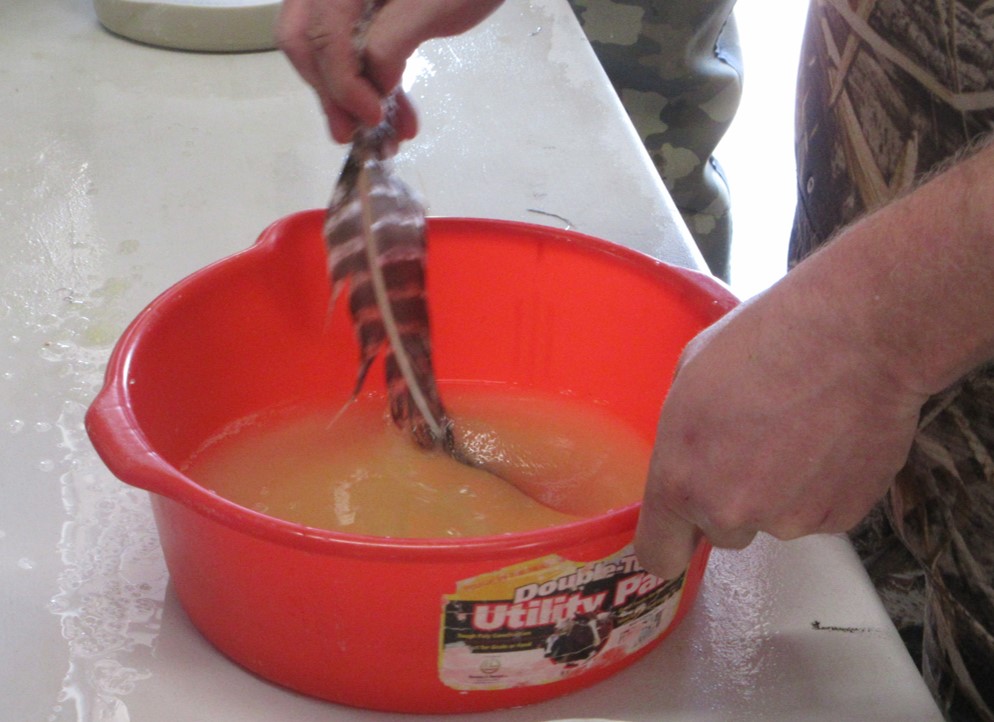
By Daryl Bauer
Going to return to the subject of hybrid fish again today. I already have blogged about several hybrids of the sunfish family, Lepomid sunfishes, and crappies. Going to move on to another family of fish, the perch family, and a common hybrid.
There is no doubt that walleye are one of the most popular sportfish in this part of the country. Surveys of Nebraska anglers have consistently shown that walleyes are the fish they most prefer. Walleyes are a fine sport fish, challenging to catch, and if you catch some that are larger than a couple of pounds they put up a good and unique fight. In spite of all of that, no doubt the main reason for walleye’s popularity is they just plain taste darned good! Sauger are a close relative of the walleye, and although they are a smaller fish they are just as prized because they taste just as good.
You know all of that.
Although both species are very comfortable in running water, rivers and streams, sauger are more adapted to fast current and turbid water. Walleyes are more successful in standing waters with better water clarity. However, the best walleye habitats are NOT crystal clear waters but also those with some turbidity.
I said all of that to say this: There can be a lot of overlap between walleye and sauger. It is not unusual that both species can be found in the same waters, sometimes the same habitats.
Which brings me to the topic of this blog post. Hybridization between walleye and sauger is not unusual. That hybridization occurs in the wild, and of course pointy-headed fisheries biologists and hatchery biologists make it happen in a bowl as well.

Walleye and sauger are related closely enough that their offspring are very capable of successful reproduction. In fact, the hybrids, saugeye, can successfully reproduce with each other and with both parent species.
That makes saugeye identification tricky. Hybrids can be half sauger and half walleye, but they also can be comprised of any amount of either parent species’ DNA. As a matter of fact, correct identification will require DNA analysis.
The Missouri River in northeast Nebraska is water where both parent species and their hybrids are common. Research done there found that even trained fisheries professionals cannot identify walleye/sauger/saugeye with 100% accuracy based on visual examination alone. I always tell anglers to make their best guess and it will be as likely to be right as mine. Call ’em the way you see ’em knowing the only way to have a sure answer is to send tissue samples to a lab for DNA analysis.
But, you know I am not stopping there. As I have with other hybrids, let me show some pictures, make some comparisons and maybe give you some tips for identification of walleye/sauger/saugeye. Again, always look for the hybrids to have a combination of characteristics of the parent species. Look for saugeye to have some characteristics of both parent species and to overall look like something in between the two. Let me again start with my “mashup”:

Pardon my fingers in the photos. I looked through a ton of them and selected those for a reason–I wanted erect dorsal fins. Notice the black blotch at the base of the rear of the spiny dorsal on the walleye. Notice the spots scattered throughout the rays of the spiny dorsal on the sauger. Then, of course, notice the saugeye that displays both of those characteristics.
Indeed, walleyes are known for the white lower lobe of the caudal/tail fin. Note that you will see some white on the margin of the tail fin on sauger too, just not as much as on a walleye. There is a lot of variability in that characteristic. Again, saugeyes will tend to have some white on the lower portion of the tail fin; some more than others.
Again let me say that coloration of fish can be misleading. Admittedly, when identifying walleye/sauger/saugeye, a lot of the identification depends on coloration. Yet, coloration can vary a lot. The sauger pictured above is a lighter, “washed out” coloration. Often times the blotches will be more distinct on a sauger.
Notice also that sauger tend to be more “cigar-shaped”. In addition, when handled, sauger often flare their gill covers. Walleye will do that too, but it seems more obvious to me on the sauger. I observe that behavior on saugeye as well.
The saugeye in the mashup photo shows some hints of that classic sauger coloration. I have seen saugeye even more darkly, distinctly colored:

One last thing I look at when identifying these species and their hybrid.
Feel the “cheeks”.
Seriously, walleye “cheeks” are smooth. They have no scales. Sauger have scales on their “cheeks”. They will feel rough. If I have a fish that has at least some walleye characteristics and rough “cheeks”, I conclude it is some combination of saugeye. Look close at this fish, a saugeye. You can see the scales on the cheek.
Sure, look close to see on which bait that fish was caught too!
Certainly, you can always check the stocking reports. Those will give you some good ideas which waters have saugeye. We are having some good success stocking saugeye especially into some of our smaller waters; those that are too small to be ideal walleye habitats. You very well may be encountering more of those fish in the future. I know some of you already are.
Even without stocking, there are several other waters in the state where you could catch some fish that you suspect to be saugeyes. As a matter of fact, our current rod and reel state record saugeye, a fish of almost 9 pounds!, was caught from Calamus Reservoir. We have never stocked saugeye or sauger in Calamus! I can only speculate how that fish got there. Can tell you that the identity of that fish, for record purposes, was confirmed by DNA. Which just goes to show, at least in some cases, you just never know. So, look ’em over and make your best call!
